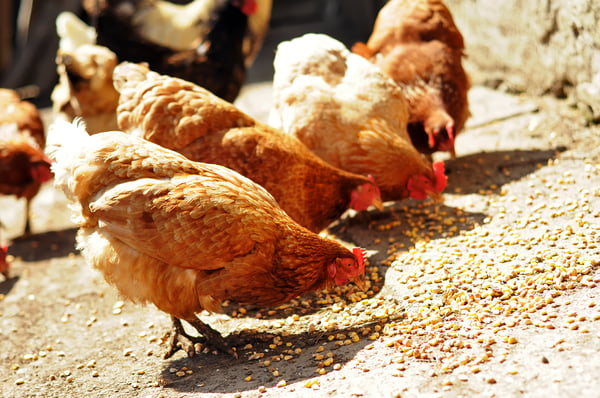Today, as a member of the animal protein industry you are facing several challenges. Often conflicting challenges of consumer demands, economical pressure, human and animal health concerns, environmental issues, governmental rules and regulations, … How can you produce quality products at an acceptable price and with healthy profit margins? Let’s have a look at 5 major challenges and 5 ways to cope successfully through feed optimization.
Consumer in control
Consumers are increasingly interested in the supply chain of food, wanting to eat ‘healthy’ and ‘natural’ foods. At the same time, most of them are not prepared to pay (much) more for daily meals. Food needs to be affordable and convenient. Both consumer tendencies - often contradictory - have a direct impact on your production costs and the formulation of your feeds. In fact, consumers are in control through their attitude toward genetically modified organisms (GMOs), antibiotic-free production, organics, food and feed safety, animal welfare and sustainability. How to counter these challenges?
A major key to success is the right formulation of raw materials, ingredients and feed additives to improve livestock welfare, to increase your profit and to rebuild consumer confidence.

Antibiotic-free production
Antibiotic-free animal production continues to be a hot topic for the animal protein industry. Here again, it’s the consumer - often united in consumer groups exerting pressure - who takes control and acts against antibiotics. To go antibiotic-free without damaging productivity is one of the major challenges.
Antibiotic free production requires a holistic approach. Feed additives enhancing feed digestibility, gut health and immunity can play a major role in the development of antibiotic alternative strategies.
Raw material transport
In Europe, 75 percent of all protein used for animal feed has to be imported, for the biggest part soybean meal and soybean cake. Transporting raw materials over long distances is at odds with today’s ecological insights and durable (long-term) strategies. Bad weather can have a very negative impact on the soy harvest in Brazil and make the cost of soy go up. Depending too much on import makes the European animal protein industry economically vulnerable.
In Belgium, the protein import for animal feed has already been lowered to 50 percent, mainly by recycling residue streams from the food industry. A feed additive that improves the nutrient absorption can reduce the inclusion of soybean.
Raw material variability
The growing use of agricultural by-products in animal feed brings along its own challenges, such as: the variation in its quality and nutritional value, even from batch to batch. At the same time, the protein output needs to have a constant quality. Managing this variability is key to a reliable and consistent animal production. Experimentation with alternative proteins such as pulse fractions, algae and insect protein, is going on, creating new challenges to turn these new ingredients into safe and economically viable feed ingredients.
The right feed additive can effectively help to ‘bridge’ this variability.
Complexity in the process
Animal protein production has not become less complicated through time, on the contrary. For all species, every life stage and substage requires its own approach. Feed conversion rates are analyzed, formulations are modified for better performance. Next to feed efficiency, process efficiency deserves focused attention.
Make sure adding dietary ingredients and additives doesn’t add complexity to the process - and to your workload. Choose an additive that is easy to store, to dose and to apply, throughout all stages.
How can you respond better to the challenges you face? Our animal feed experts and nutritionists are ready to help you. Contact us >
